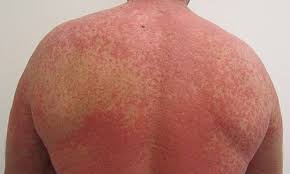
A drug rash (drug eruption), also known as a drug reaction, is a skin condition caused by a medication. A drug rash can appear in many forms, and any medication can cause a drug rash.
WHO'S AT RISK?
Drug rashes can appear on people of all ages, all races, and of both sexes. However, women are more likely than men to develop drug rashes, and they tend to occur more frequently in elderly people.
Factors that predispose an individual to
developing a drug rash include:
Although any medication can cause a drug rash, the most common types of medications that trigger a drug rash include:
SIGN & SYMPTOMS
Drug rashes can appear as a variety of
skin rashes, including pink to red bumps, hives, blisters, red patches,
pus-filled bumps (pustules), or sensitivity to sunlight. Drug rashes may
involve the entire skin surface, or they may be limited to one or a few body
parts.
Itching is common in many drug rashes.
However, if fever is present, the skin is tender, or the membranes inside
the mouth or the genitalia are involved, then a more serious skin condition may
be present.